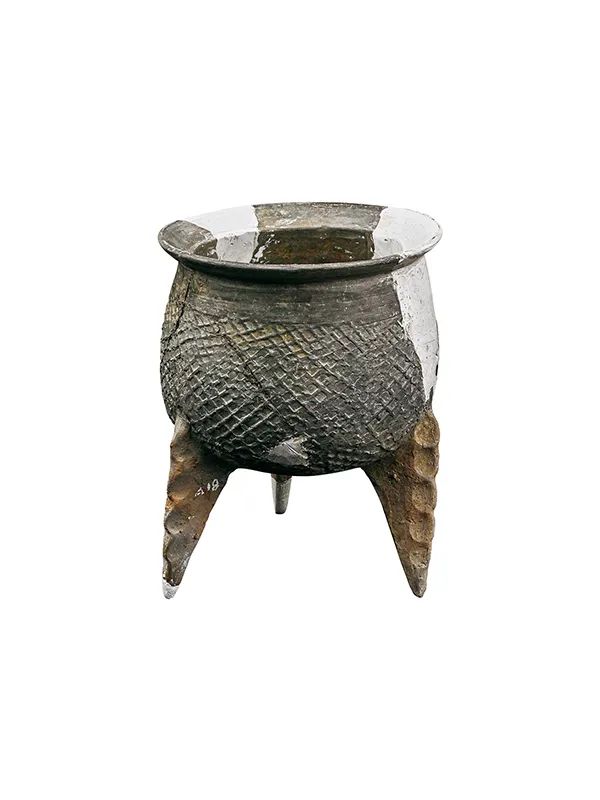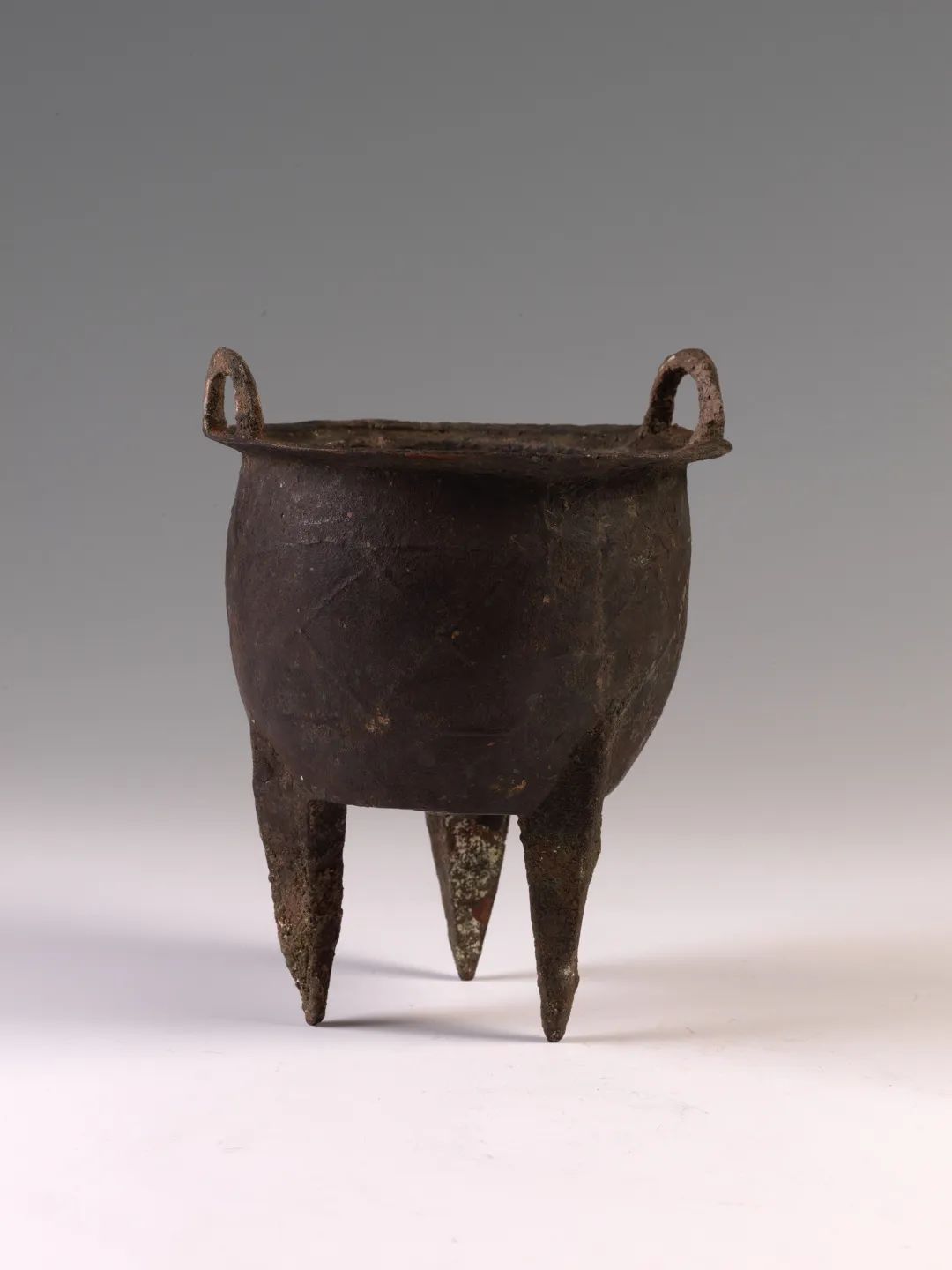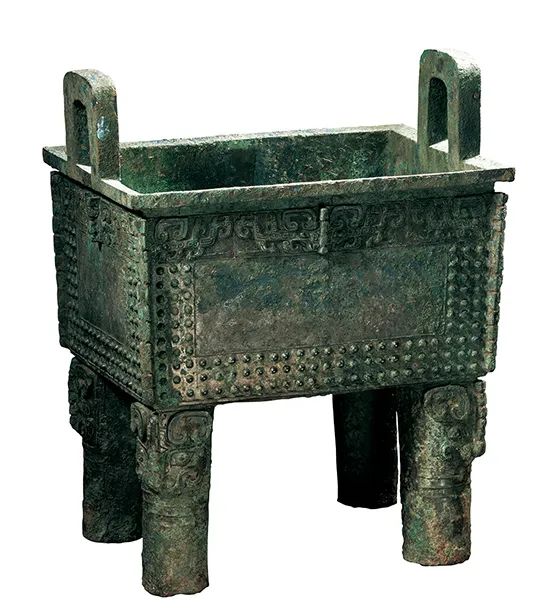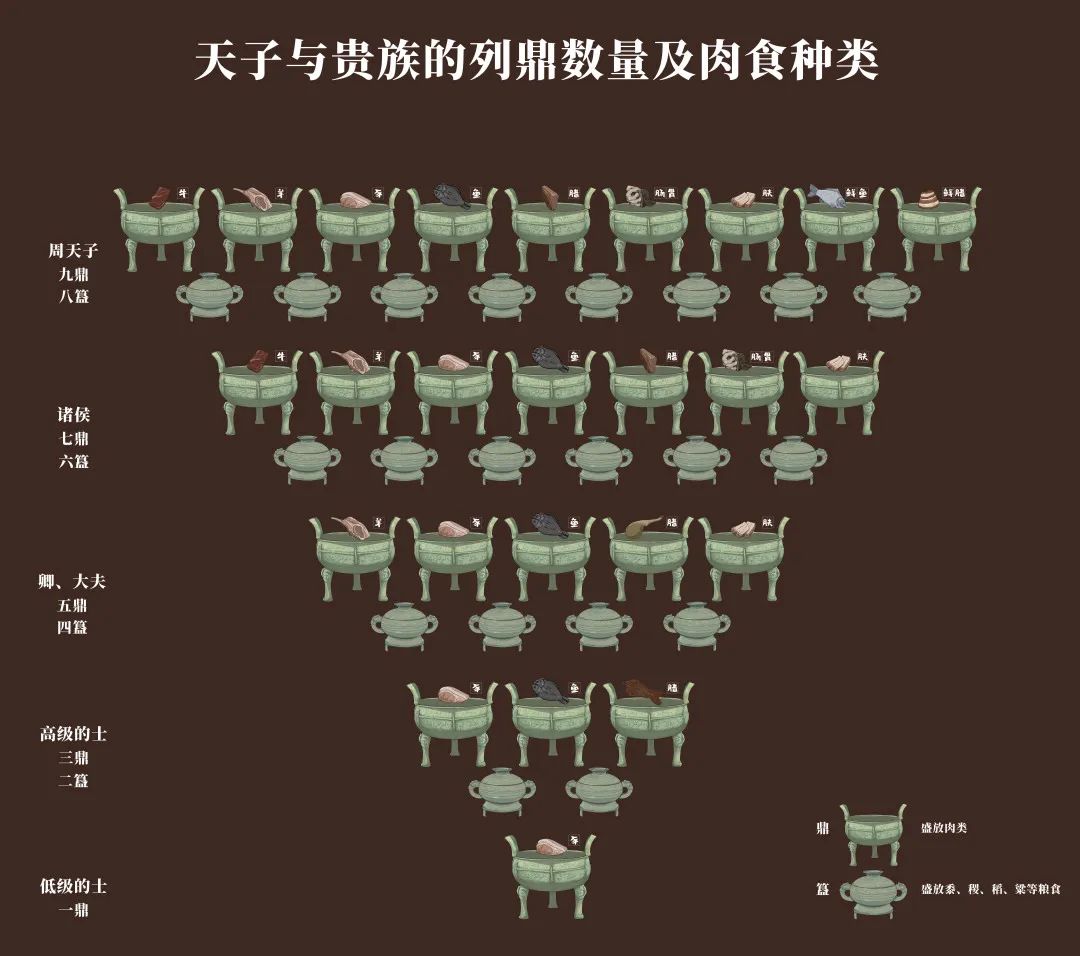Special Show Read | Xia, Shang and Zhou dynasties, "Ding"
Author:ShangHai museum Time:2022.08.27

From the beginning of the exhibition, to the "summer", "business" and "Zhou" exhibition area that is slowly opened, Ding is one of the most common utensils in the "Houses China" exhibition. From cooking wares to rituals, from pottery to bronze, what kind of existence is "Ding" in Xia Shang's social life on Wednesday generation? Looking at the exhibition of "Zhaiz China", there are a few questions about "Ding" and want to talk about it ~
01
Tao Ding and Tong Ding, who appeared first?
Square -fiber Tao Ding

Early summer
Unearthed in Xinmi Xinzhai Site in 2000
Zhengzhou Cultural Relics and Archeology Institute
Grid

Late Xia Dynasty
Unearthed from the Erlitou Site VM1 in 1987
Erlitou Xiadu Site Museum Collection
Ding, the earliest seeing Pei Ligang culture in the middle of the Neolithic period, is about 8,000 years ago. It is a cooking tool made of pottery for cooking. At the beginning, the ancestors added three feet on the pots and pots that were commonly used, so that they could burn fire directly under their feet and cook food. Later, this type of device spread from Pei Li Gang culture to the middle and lower reaches of the Yellow River and the middle and lower reaches of the Yangtze River, as well as other more regions.
The Central Plains has invented Ding, and it has always been the core area of Tao Ding culture. Tong Ding also developed on the basis of Tao Ding. It was originally cast by the shape of Tao Ding.
The grid tripod unearthed at the Erlitou site in the exhibition is the earliest bronze tripod we can see at present. This copper tripod belongs to the fourth phase of the two miles. It has been broken at the time of unearthed. The abdomen has a strands of grid, and the wall of the instrument is thin. Overall, the shape and decoration style of this copper Ding is inherited from the Tao Ding in the late Tao Ding in the late Longshan culture of Henan. There are many similarities in the aspects of abdominal, decorative style.
02
Is there a level of Fang Ding and Yuan Ding?
Beast Facial Fang Ding

Mid -term Shang Dynasty
Unearthed in Duling Street, Zhengzhou in 1974
Henan Museum Collection
Mother Si Fang Ding

Late Shang Dynasty
In 1976, Anyang Xiaotun Women's Tomb was unearthed
The Institute of Archeology, Chinese Academy of Social Sciences
Although the "three -legged Ding" is deeply rooted in people's hearts, there are many well -known heavy weapons, such as the world's largest bronze in the world (collected by the National Museum of China). Two Shang Ding of the Shang Dynasty in the exhibition, one is the beast fabric Fang Ding unearthed from the bronze cellar pits in Duling Street, Zhengzhou, and the other is the mother -in -law of the Anyang Women's Tomb. Strong.
The basic feature of Bronze Fang Ding is that the abdomen is square or rectangular, four -footed, and the shape is different from the three -foot round tripod, but the large -class functions are similar, and the level height cannot be performed. Bronze Fang Ding has gone through early development. By the late business period, the business continued, and the Western Zhou Dynasty continued. After the middle of the Western Zhou Dynasty, it declined and slowly disappeared on the land of the Central Plains. There are more than a hundred bronze Fang Ding discovered in archeology, mainly due to middle and senior tombs. Some scholars believe that Fang Ding is one of the core utensils in the Shang Dynasty ritual system. At the beginning of the appearance, only the highest class could be used. The number of Fang Ding in the late Shang Dynasty increased, and the scope of users expanded to the entire noble class. After the establishment of the Zhou Dynasty, Fang Ding's users were mostly members of the old people and the royal family. With the establishment of the Zhou people's own etiquette system, Fang Ding, who represents business culture, was abandoned, and formed a ritual system with Yuan Ding as the core. The Lie Ding system was established in the middle of the Western Zhou Dynasty.
03
Who used Jiuding and Wuling in the exhibition?

The Lie Ding system was formed in the middle and late Western Zhou Dynasty. The number of Ding's use corresponds to the user's identity level, and the shape of the tripod is similar and the size decreases. Some scholars are more common based on the literature that the emperor uses Jiuding and eight, princes to use Qiding and Liuyu, Dr. Qing to use Wuding Siqi, senior taxis are San Ding, two, and low -level taxi, and Corresponding to too prison, less prison, etc., Tajun refers to the three animals of cattle, sheep, and pigs, and less prison refers to sheep and pigs.
At present, there are no nines of the bronze wares unearthed from the aristocratic tombs from the Western Zhou Dynasty from the Central Zhou Dynasty to the beginning of the Spring and Autumn Period in the Central Plains region. tripod. However, with the decline of the royal family of the Eastern Zhou Dynasty and the ritual collapse caused by the competition between the heroes, the Lie Ding system was also destroyed.
There are two sets of Ding Ding in the "Zhaizi China" exhibition.
Zheng Han's hometown, located in Xinzheng City, Henan, is the capital of Zheng Guo during the Spring and Autumn Period and the capital of South Korea during the Warring States Period. Among them, it was found that the Zhengguo sacrifice site in the mid -spring and autumn was found. There were 18 bronze ritual instruments and 348 bronze wares unearthed. According to scholars' research, this batch of utensils may be used for social sacrifice. "Society" represents the land, and "表" represents grain grain. Social festival is also a very important incident in the political life of the Shang and Zhou dynasties. Zhou Li stipulates the front of the palace, and the left side is the ancestral temple, which is used to sacrifice the ancestors. On the right is the social sacrifice place. The Jiuding unearthed here is similar in shape and the size of each other. It is a group of Ding. The user is Zheng Guojun as the princes.
螭 螭 螭 螭

Unearthed in Guiyuan East District, Linzhou in 2003
Linzhou Museum Collection
Linzhou was the capital of Zhao State for a period of time (about 40 years), and found the tomb group during the Spring and Autumn Period and the Warring States Period. The set of this group of Ding Ding was in the early Warring States Period. It was five pieces of the same shape and size of the shape of the ware. The identity of the tomb owner was not yet clear. It may be the noble class of Dr. Zhao Guoqing.
References: Han Jianye: "The Development and Evolution of Tao Ding in the New Stone Times of China", "Archeology" 2015, Issue 01.
Zhang Junru: "Du Ling Fang Ding", Elephant Publishing House 2018 edition.
Zhang Wenjie: "Ding Ding System for the Zhou Dynasty", Journal of Archeology, 2012, Issue 2.
• Azhaz China -Henan Xiaeshang Wednesday Generation Civilization Exhibition •
Edit 丨 Cao Yuan
Preliminary review 丨 Shi Weichen
Final Appeal 丨 Tang Shifen
Copyright Notice


The graphics published by the Shanghai Museum (WeChat: Shanghai Museum) are all copyright works, for reference for subscribers only.If you need to reprint other websites, clients, and WeChat accounts, please contact us to obtain authorization and indicate the copyright information of the "Shanghai Museum".Thank you!
Contact number: 021-63723500
- END -
Lile Shandong | Weifang: [Create East Asian Cultural Capital] "Enjoy Kuiwen" Cultural Tourism and the people's consumer consumption season releases the potential of cultural travel

Since the beginning of this year, the Cultural and Tourism Bureau of Kuiwen Distri...
The 100 most commonly tested by the journal history (with 30,000 words of PDF)

2023 Mu Duo [Mid -year Restoration] series of heavy return! Fame, topics, cases, g...